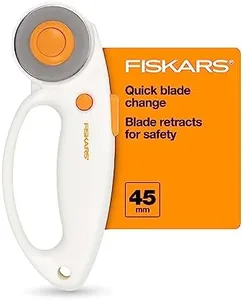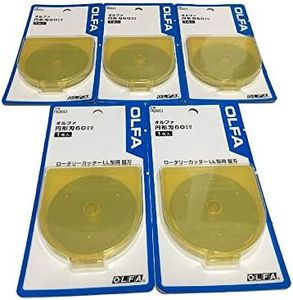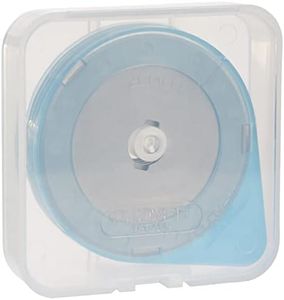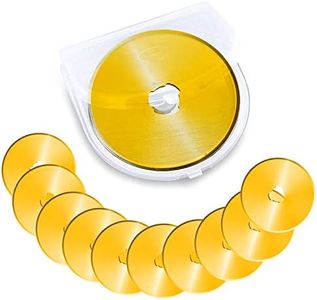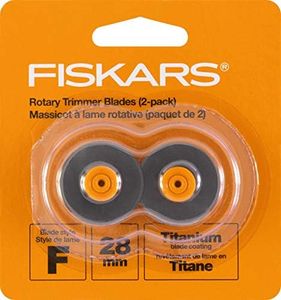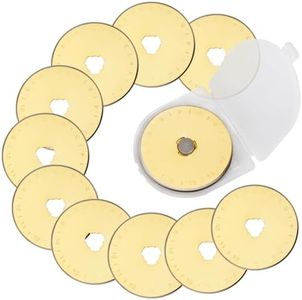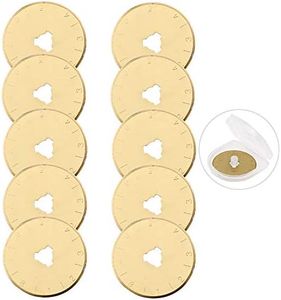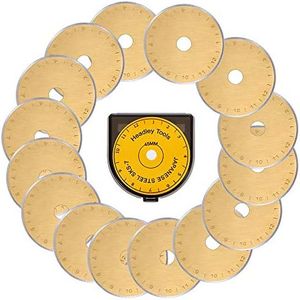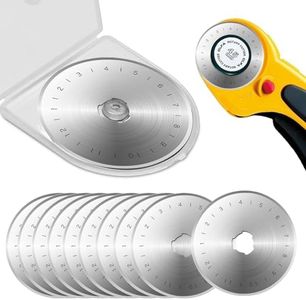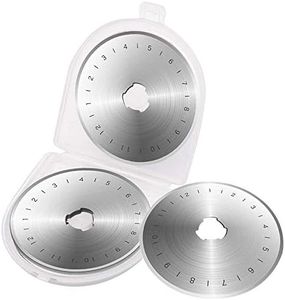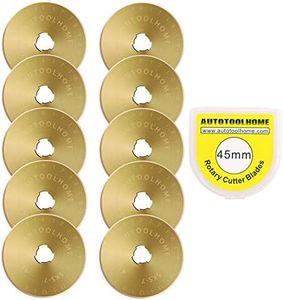We Use CookiesWe use cookies to enhance the security, performance,
functionality and for analytical and promotional activities. By continuing to browse this site you
are agreeing to our privacy policy
10 Best Quilting Rotary Cutter Blades
From leading brands and best sellers available on the web.By clicking on a link to a third party's website, log data is shared with that third party.
Buying Guide for the Best Quilting Rotary Cutter Blades
Choosing the right rotary cutter blades for quilting is essential for smooth, precise fabric cutting and ease of use. The right blade can make your quilting projects more enjoyable, save time, and help protect both your fabric and your hands from uneven cuts and strain. The key is to understand what makes blades different, know what you plan to cut most often, and match the blade features to your quilting style and frequency of use.Blade Size (Diameter)Blade size refers to the diameter of the rotary cutter blade, usually measured in millimeters. The most common sizes are 28mm, 45mm, and 60mm. Smaller blades like 28mm are great for intricate curves and tight spaces, while larger blades such as 60mm can cut through more layers and are ideal for straight, long cuts. The 45mm size is the most versatile and popular for general quilting. Choose the size based on the types of cuts you most often make: small and precise or large and straight.
Blade MaterialBlade material determines durability and sharpness. Most blades are made from stainless steel or carbide-treated steel. Stainless steel blades are resistant to rust and affordable, making them suitable for average use. Carbide-treated or tungsten steel blades are harder and stay sharper longer, ideal for frequent quilters or those cutting tougher materials. Pick a blade material that matches how much you quilt and the types of fabric you use.
Edge TypeEdge type refers to the shape of the blade’s cutting edge. The most common is a straight edge, but you can also find wave, pinking, or scallop edges, which are used to create decorative finishes and minimize fabric fraying. For everyday quilting with straight lines, a standard straight-edge blade is best. If you want decorative edges or work with materials that fray easily, consider specialty edge blades. Your intended design and project requirements will guide this choice.
CompatibilityCompatibility means whether the blade fits your rotary cutter’s handle. Most blades are designed to fit specific brands or models, although some are more universal. Always check the size and fitting system before purchasing blades. If you want convenience and flexibility, look for blades that claim to be compatible with multiple major brands, but always double check with your cutter’s manufacturer recommendations to ensure a secure and safe fit.
Number of Uses / DurabilityDurability refers to how long the blade will stay sharp and effective before needing replacement. This can depend on both the material and the manufacturing quality. Some blades are designed for heavy-duty, long-term use, while value packs provide multiple blades for frequent replacement. If you quilt often or with tough fabrics, consider longer-lasting blades. For occasional projects or light fabrics, standard or economy blades might suffice. Base your choice on how frequently you expect to change them and what you cut.
